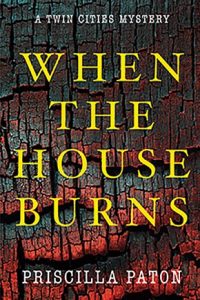Writing When Hurt, Writing To Heal
 It could have been the ideal conditions for writing non-stop: no running of errands with necessities delivered to the door, no interruption by visitors, no annoying events, simply solitude at home. For me and many others, however, the COVID pandemic shutdown didn’t work out that way. It was like a bad first draft which stumbles from one off-base idea to another, seeks resolution in a well of uncertainty, and in the end just won’t resolve.
It could have been the ideal conditions for writing non-stop: no running of errands with necessities delivered to the door, no interruption by visitors, no annoying events, simply solitude at home. For me and many others, however, the COVID pandemic shutdown didn’t work out that way. It was like a bad first draft which stumbles from one off-base idea to another, seeks resolution in a well of uncertainty, and in the end just won’t resolve.
Disruption and distress ruled the day, with fear turning brain juices to bile. In March, I rushed back from writer’s conference in San Diego to Minnesota because of stay-at-home orders. At home, my husband entered the Zoom domain to convene nonstop with a team on how to keep college students safe and educated; I had nonprofit board meetings concerned with equity and domestic violence. I had my second Twin Cities Mystery, Should Grace Fail, in the pipeline only to learn that a paper shortage was causing pub delays and that live promotion events were verboten. Our residence developed a peculiar odor—the basement had become toxic, and we needed to move asap. We had a place to go, but it’s difficult to achieve literary brilliance while making numbing decisions about what goes in a box and what goes straight to the dumpster.
Then, forty miles away, the day we were moving, George Floyd was killed by a police officer.
This murder shook the region and beyond with its tragic injustice. I was physically “safe” but had young relatives in Minneapolis involved in protests and whose local stores were burned in the rioting. I began to feel queasy about my mystery writing: how could I responsibly write mysteries featuring white detectives in the Twin Cities?
I listened to podcasts on how people of color were coping with the pandemic post-Floyd world. Commentators spoke of their rage, their grief, and of how white people could be allies. Listen; allow room for pain; be witnesses and allies. I took this advice to heart by writing into the pain, confronting bad feelings from the petty to the overwhelming. This journaling was part private therapy and part groundwork for the distress of my fictional detectives Erik Jansson and Deb Metzger in When The House Burns.
For my Twin Cities Mysteries, I aspire to prose that is respectful and compassionate, and edgy and funny. Yet my sense of humor had curled up and died back in that toxic basement. Fellow writers agreed that it was no help to be reminded that Shakespeare wrote King Lear during a plague. I reread Edgar Allan Poe’s plague story, “Masque of the Red Death.” Succinctly creepy but again, no help. Oh, and I’m forgetting the important work done on jigsaw and crossword puzzles and time spent watching series set in colorful places like The Durrells in Corfu.
Which reminded me that there’s inspiration in real places. With my previous mysteries I toured Twin Cities’ neighborhoods, parks, concert venues, and cafés. Since I live elsewhere, this meant driving and hanging out for a day or evening. During the uncertainty about COVID transmission paths, I dreaded using a public restroom (which inspire dread anyway). It’s hard to spend a day touring without taking a bathroom break, especially given my writer’s addiction to coffee.
I became addicted instead to sites like Niche.com, Realtor.com, Zillow, and took virtual tours to conjure up dwellings for characters. That contributed to a seismic shift in my book’s topic. I had not planned to zero in on homelessness and the housing crisis in my third mystery until my sudden move and the heightened concern about the unhomed changed everything. The virtual tours also revealed evocative details. Luxury condos had lobbies like five-star resorts. A three-story red house staggered like the crooked house of a nursery rhyme. One arts & crafts home featured a comic book mural: a dragon wound up the stairway to fight Wonder Woman.
Having a premise, setting, and characters created a foundation for the novel, and my history with committees grounded me in a greater purpose and, committees being what they are, gave me fodder for satire. I wouldn’t have gotten far, though, with the support of a writing community. The way to be alone is to have good (virtual) company. For the first time, I participated in NaNoWriMo, National Novel Writing Month, and having the goal of 50,000 words (almost met) helped me produce the bulk of the novel. Social media chats sponsored by Sisters in Crime gave us writers a boost. Online presentations by my local Sisters chapter, luckily for me, covered how social workers collaborated with law enforcement to assist the unhomed.
But what context would the mystery have? Would it be set during a shutdown? Heck no, who’d want to return to that? Then how do you imagine the future? I went with near normalcy but eventually rewrote the opening of When The House Burns to reflect that COVID, like crime and folly, never fully went away.
I’m still re-emerging from the shutdown as a social individual—adjusting to hearing voices outside those in my head—and as a writer with forward propulsion. I could preach that it’s all about patience and persistence—yeah, yeah, yeah. But I wouldn’t have made it with the mischief of Deb and Erik.
—
Priscilla Paton writes mysteries set in the greater Minneapolis/St. Paul area. Priscilla grew up on a dairy farm in Maine. She received a B.A. from Bowdoin College, a Ph.D. in English Literature from Boston College, was a college professor and taught in Kansas, Texas, Florida, Ohio, and Minnesota. She has previously published a children’s book, Howard and the Sitter Surprise, and a book on Robert Frost and Andrew Wyeth, Abandoned New England. She married into the Midwest and lives with her husband in Northfield, Minnesota. When not writing, she participates in community advocacy and literacy programs, takes photos of birds, and contemplates (fictional) murder.
Website https://priscillapaton.com/
Twitter https://twitter.com/priscilla_paton
WHEN THE HOUSE BURNS
 When death comes home, is nowhere safe? The quest for love and home becomes deadly when Detectives Erik Jansson and Deb Metzger search for the killer of an adulterous real estate agent.
When death comes home, is nowhere safe? The quest for love and home becomes deadly when Detectives Erik Jansson and Deb Metzger search for the killer of an adulterous real estate agent.
A volatile real estate market, unrest in a homeless encampment, jealousies among would-be lovers, a case of arson—these circumstances thwart G-Met detectives Erik Jansson and Deb Metzger as they investigate the murder of an adulterous woman. The victim’s estranged husband has holes in his alibi. A property developer grieves too much over the death of the woman while his wife shuts him out. The developer’s assistant resents his boss and suspects that the developer was not only involved with the victim but is being scammed by the arsonist. A sexy young widow, friend of the victim, has past traumas triggered by the case and turns to the developer for protection. A homeless man stalked the dead woman and now stalks the young widow. All may hold secrets about the past burning of an apartment complex and the man who died there.
Before the clues come together, Erik Jansson is trapped in an abandoned house as Deb Metzger hunts for a sharpshooter at a remote construction site. The case will burn down around them unless they can scheme their way out of lethal surroundings.
BUY HERE
Category: How To and Tips























